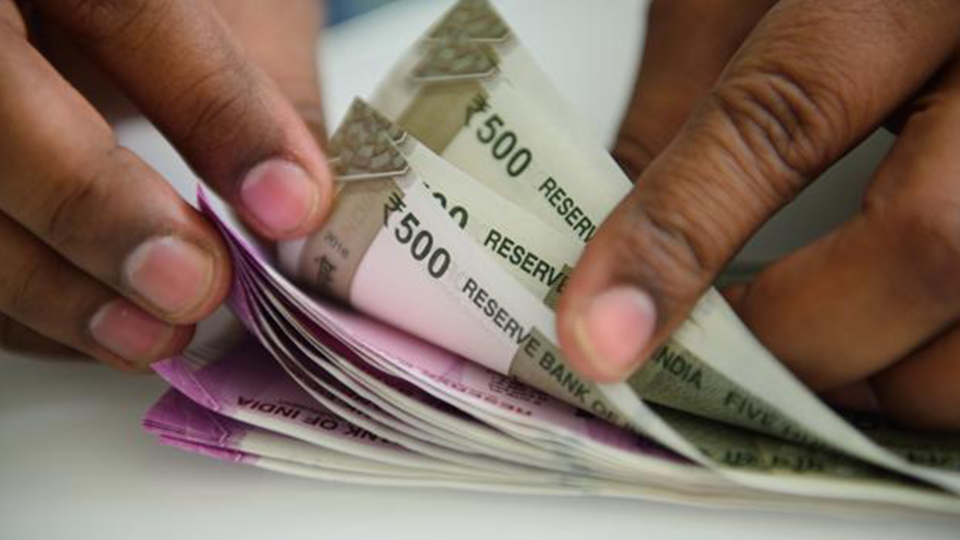While large corporates seem to be facing a problem of surplus, it is not so in the case of individual households, whose savings are depleting and liabilities are increasing.
The build up/depletion and surplus/deficit of cash flows, reflects the current state of affairs of any entity, whether it be an individual or a corporate. The covid pandemic and the crisis that it has caused, has disrupted and demolished the cashflows of many. The recent newspaper reports have been discussing the state of cash flows of the corporates and of individuals and they are worth an analysis.
The Business Standard reports that the top listed companies (except banks, NBFCs and insurance firms) are sitting on a surplus cash of Rs. 11.20 lakh crores and they have little use of it, for their business operations. Companies are thus preferring to pay very high dividends, or buyback of their shares, so as to dispose of the surplus cash to the shareholders. The report speaks about Bajaj Auto, which is sitting on a surplus cash pile of about Rs. 16000 crores, which is increasing at the rate of Rs. 5000 crores p.a., due to the build up of annual profits, after incurring routine capex. Not knowing what to do with this cash pile, the company has decided to henceforth distribute 90% of its profits as dividend to shareholders. The dividend payout of the top non financial companies is now about 78% of their net profit and yet their cash on hand has increased by 13.8%. Other companies like TCS, Wipro, Infosys, Tech Mahindra, Adani Ports, Coal India etc. have been returning cash to their shareholders through buyback of shares and since Jan 2019, they have returned over Rs. 64000 cr. to their shareholders through this mode. It may be noted that this huge build up of cash on balance sheets is only in the case of large listed companies and not in the case of others, many of whom are struggling to survive.
While large corporates seem to be facing a problem of surplus, it is not so in the case of individual households, whose savings are depleting and liabilities are increasing. A recent monthly bulletin of the RBI says that the household savings which had risen to 21% of GDP in the June 2020 quarter, have fallen to 10.4% of GDP in the September 2020 quarter. The household debt has risen between Q1 to Q2 from about 35% of GDP to 37% of GDP. The cash in hand in the case of households was 5.3% of GDP in Q1 FY 2021, but fell to a mere 0.3% in Q2 of the current FY. As per the RBI, the household savings fell/moderated further in the Q3 ended 31.12.20, due to festival/pent up demand spending. With untamed joblessness and depleted livelihoods, household savings may recede even further. The picture that emerges from these reports is as under.
LARGE CORPORATES
- Corporate cash surplus has been mounting primarily due to lack of consumer demand, resulting in idle/unutilised capacity, which prevents the need to incur capex on new projects.
- It is aggravated primarily due to unwillingness to invest in new projects.
- Corporates are therefore doing best with the surplus cash, either returning it to shareholders, by way of dividend/buyback of shares or repaying loans and deleveraging their balance sheets.
- That explains their unwillingness to take fresh loans from banks and FIIs.
- With corporates not knowing what to do with cash surplus, it means that real growth is missing now and also in the foreseeable future.
This situation of surplus cashflows is limited to the few large corporates only, because otherwise, corporate bankruptcies are rising and so are NPAs.
HOUSEHOLDS/INDIVIDUALS
- The huge rise in savings to 21% of GDP in Q1, was due to the lockdown that restricted spending to essential items only and also because scared/apprehensive households saved for uncertain times looming on the horizon.
- In Q2 ended September 2020, households did incur spending on the discretionary items, but borrowed heavily in the order to replenish their finances for uncertain times.
- The massive cash on hand that they had in Q1 was either spent or banked in Q2 of the current FY.
- A further dip in savings by cautious households in Q3 is a reflection of compulsion of festival spending and also reduced incomes due to unemployment and eroded livelihood.
- With the end of moratorium/restructuring process and the compulsion to repay loans, the household savings can deplete further.
- Consumer demand for discretionary spending will take a few more quarters to pick up.
The interesting and pertinent point is that cashflows of the government, the spender of the last resort are no good either.
As an independent media platform, we do not take advertisements from governments and corporate houses. It is you, our readers, who have supported us on our journey to do honest and unbiased journalism. Please contribute, so that we can continue to do the same in future.

